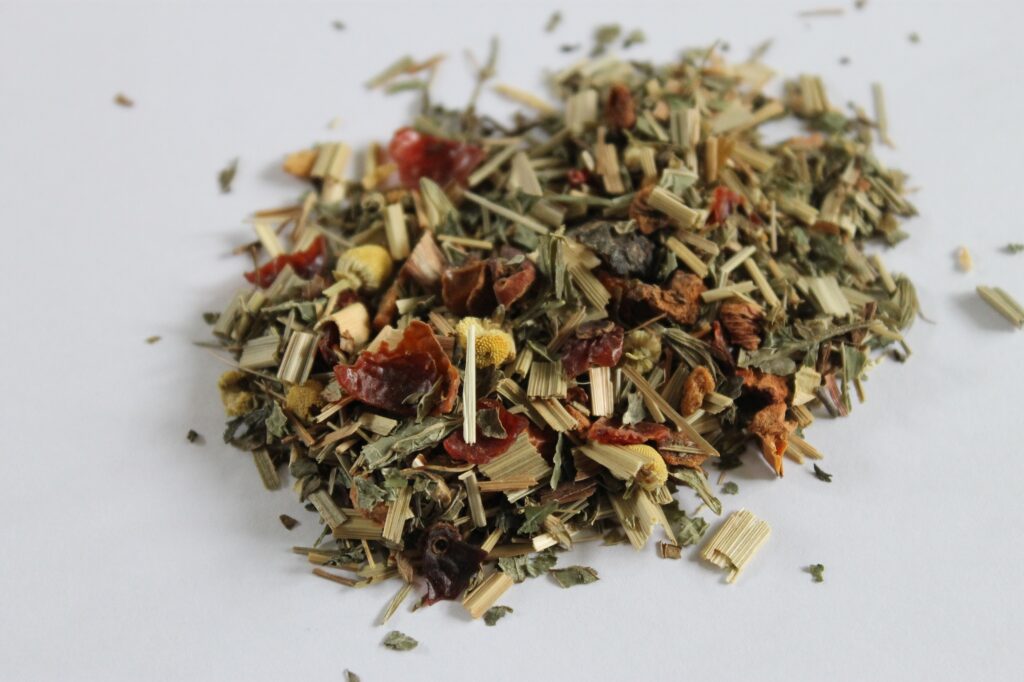Herbal teas are so varied and flavourful that it can be tough to choose which one to drink! That’s why I’m creating this guide to popular herbal infusions that you can find easily in the supermarket, grocery store, online, and even outside your home.
You can find details about the 10 most popular herbal teas below, including the flavours you should expect, other herbs that they pair well with, and their unique health benefits.
To find the health benefits of herbal teas, I look at published studies rather than relying on old wives’ tales. However, that doesn’t necessarily mean that a cup of herbal tea will cure cancer or treat all your symptoms. Typically, you’d need to consume an extract or highly concentrated version of any herbal brew to feel any effect. There are exceptions to that rule, however, like valerian and liquorice.
Important Note: Always talk to a medical health professional before taking herbal tea to treat an ailment. You should also discuss herbal teas if you are on any medication, as they can interact.
Herbal Teas, Infusions, and Tisanes
Herbal teas are a category of teas that are technically infusions. True teas, like black tea, green tea, white tea, matcha, and more, are all from varieties of the Camellia sinensis tea plant. These teas are caffeinated.
Herbal teas, on the other hand, are not caffeinated and they can be made from the leaves, roots, seeds, flowers or stems of any other plant. Historically, these teas may have been consumed for medicinal benefits, or just for enjoyment.
Another word for an herbal infusion is ‘tisane’ which simply means the same thing – a hot drink made from infusing an herb in hot water. Sometimes these beverages are called botanicals too.
Fruit teas are a little different. Some brands label fruit teas and herbal teas together, while others make a key distinction. Lemon, for example, would make a fruit tea, if you infused the edible segments of the fruit. However, if you were just using the lemon zest or seeds, you could maybe get away with labelling it as an herbal blend!
10 Popular Herbal Teas
I have selected these teas based on what my viewers search for most at Immortal Wordsmith, as well as my knowledge as a tea taster.
You can also find some links below, where I have recommended herbal tea brands for each herb. If you click one of these links and make a purchase, I may receive a small commission. This is at no additional cost to you but it really helps keep our blog running!
1. Chamomile
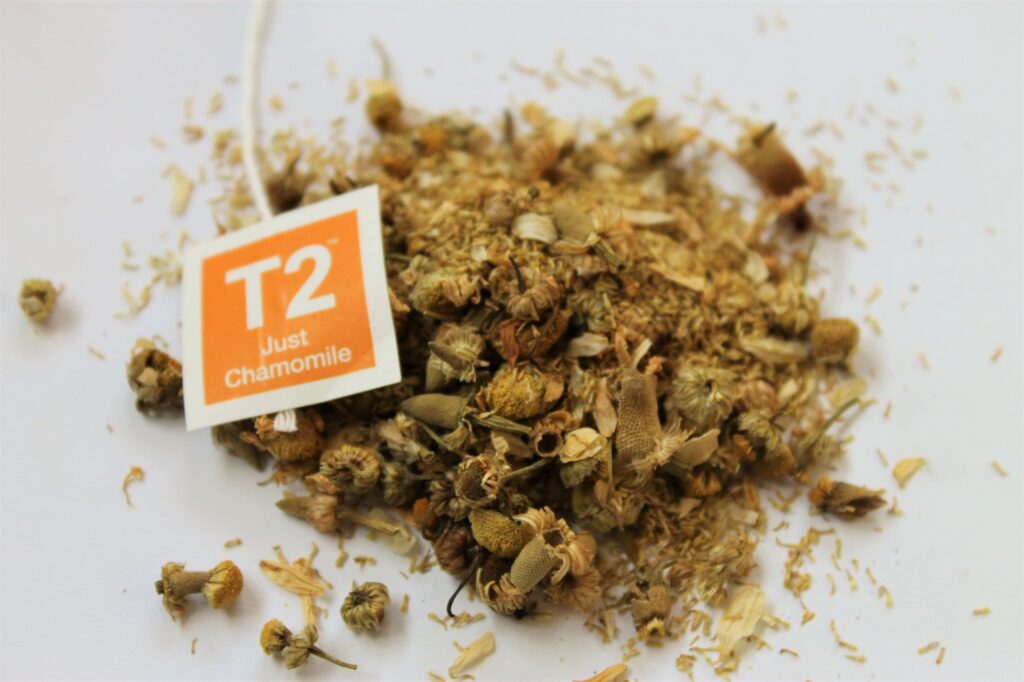
- Plant: Matricaria recutita, Anthemis nobilis
- Type: flower only
- Flavour: hay-like with mellow honey notes
- Health: Soothing, sedative, pain reliever
Chamomile is a very popular tea and it’s easy to see why. Although it is made from the flowers of the chamomile plant (there are two varieties that are widely used), it does not have a floral taste. Instead, it has warm and mellow notes of hay and honey. When I sip a cup, I always imagine it tastes like sunshine.
As for health benefits, chamomile is often consumed as a sleep remedy thanks to its soothing and sleep-inducing properties. Chamomile is also listed as having mild analgesic properties.
For a good cup of chamomile tea, I recommend Whittard of Chelsea. Their chamomile (also spelled camomile) is organic. I reviewed their loose leaf version, but it’s also available in teabag format.
2. Spearmint

- Plant: Mentha spicata
- Type: leaf only
- Flavour: gently minty with warm grassy sweet notes
- Health: Treat colds, coughs, and fever, soothe digestive problems
Commonly consumed as an after-dinner herbal tea, spearmint has been used traditionally to aid digestion. It could also be used to treat a cold – the low menthol in spearmint helps to clear congestion. Studies have found that spearmint has antimicrobial and anti-inflammatory effects.
As for the flavour, spearmint is one of the gentler mints. The menthol content (that minty flavour that feels bright and cold in your throat) is quite low and it has a warm sweetness. In contrast, peppermint (see below) is quite chilly and refreshing. I’d describe spearmint as a little more grassy and traditionally herbal.
My favourite review of a spearmint tea is this one of Bion Herbs, however they can be a little tough to come by. So, for a reliable spearmint tea, check out Traditional Medicinals Spearmint Tea.
3. Ginger
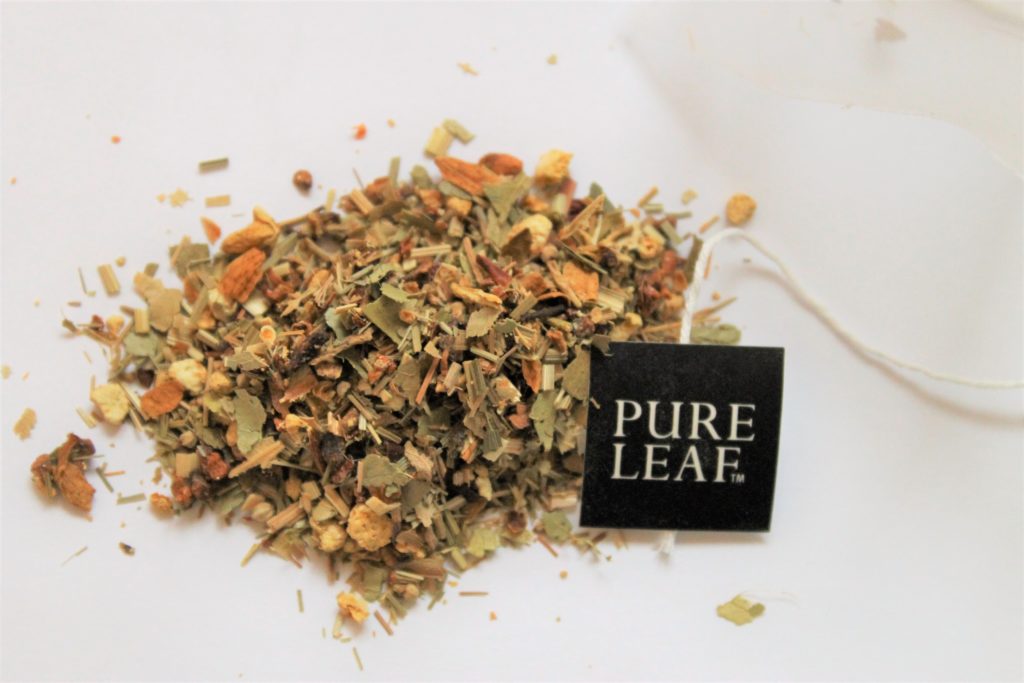
- Plant: Zingiber officinale
- Type: root only
- Flavour: fiery, warm and spicy with a woody sweetness
- Health: Reduce inflammation, treat a sore throat, settle your stomach
Ginger is a well-known spice that’s used in numerous cuisines but is also a powerful herbal tea. The ginger root can be made into tea by simply slicing the root and soaking it in boiling water – or you can find dried ginger in teabag format, which stores better but just doesn’t taste as good.
Many people know that ginger has anti-inflammatory properties, so it is particularly useful for treating a sore throat. The warming spicy flavour is quite comforting when you are sick too, as ginger is incredibly effective at reducing nausea. Scientists have found that it is the gingerol compounds in the root that create these beneficial effects.
Few tea brands sell a pure ginger tea, so I recommend T2 Lemongrass and Ginger. As I noted in my review, the ginger is quite subtle but very warming and complements the lemongrass beautifully.
4. Hibiscus
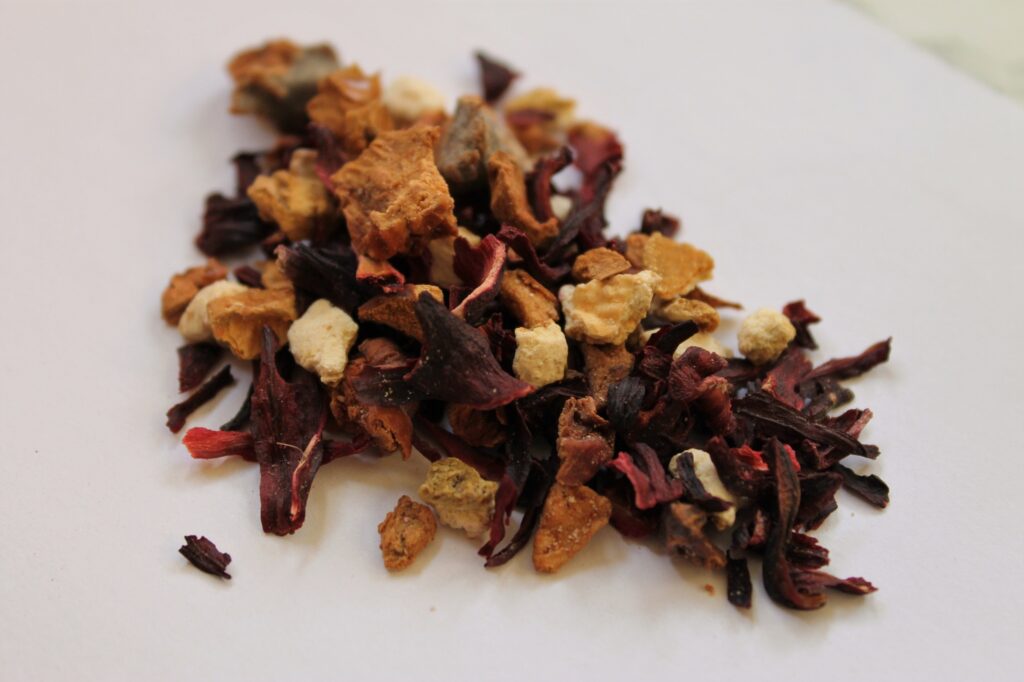
- Plant: Hibiscus sabdariffa
- Type: calyces (flower part)
- Flavour: very tart, slightly sweet, berries
- Health: anti-cholesterol, anti-diabetic, antioxidant content
Hibiscus is one of the great herbal teas that many people don’t even realise is an herb! It is made from the calyces of the hibiscus flower, but it doesn’t taste floral. In fact, hibiscus has a very tart berry flavour. It really adds a juicy tart edge to many tea blends, so as a result it’s one of the most common ingredients I see.
Hibiscus has numerous benefits, primarily from the antioxidant content. It has also been shown to be anti-cholesterol and anti-diabetic, favourably altering blood pressure too.
My favourite pure hibiscus tea is from Teapro, but you can find numerous brands selling it on Amazon too. Read my Guide to Hibiscus Tea to learn more.
5. Peppermint

- Plant: Mentha piperita
- Type: leaf only
- Flavour: very minty with strong sweetness and menthol
- Health: aromatherapy calming, relieve irritation and inflammation
Peppermint, spearmint’s second cousin, is a very sweet and menthol-rich herb. This is the mint that’s used to flavour candy canes and toothpaste, with a natural sweetness and a strong cool sensation. Peppermint herbal tea is really nice both hot and cold – it’s a key element in Moroccan Mint teas, which combine peppermint with green tea and sugar to create a super refreshing drink.
Health benefits associated with peppermint include refreshing and cooling. Applied topically, it can reduce irritation and also has anti-inflammatory properties. It is also good for your oral health and freshens up your palate after a meal.
My recommendation for peppermint tea is Teapigs Peppermint – available in loose leaf or pyramid teabag format. You can find it on Amazon.
6. Rooibos

- Plant: Aspalathus linearis
- Type: leaf only
- Flavour: woody, nutty, medicinal, earthy
- Health: liver health, cardiovascular health
Rooibos is a tea from South Africa that is also called redbush tea or just red tea. It has a nutty, woody flavour with a hint of tannins. This is often why it’s used as a caffeine-free alternative to true tea. In fact, rooibos can be brewed darkly enough to drink with milk.
As I explored in my Guide to Rooibos, the health benefits of this herbal beverage range from liver protection to lower risks of cardiovascular disease. If you want pure rooibos, Teapro do the best option. You can find endless rooibos blends on Amazon too.
7. Valerian

- Plant: Valeriana officinalis
- Type: root only
- Flavour: woody, pine, citrus, evergreen
- Health: aid sleep and reduce anxiety
Valerian is an old remedy for sleep troubles. The tea, made from the root of the valerian plant, has strong sedative properties and can help you improve your sleep quality. Along with chamomile, it is one of the key ingredients found in herbal sleep formulas.
As for the flavour, it is quite woody with a slight citrus pine edge to the scent. You don’t typically drink valerian tea for the flavour!
For a pure valerian tea, try Buddha Teas. Most brands combine valerian with other ingredients for a sleep blend – check out my Tea People Sleep review as a great example.
8. Nettle

- Plant: Urtica dioica
- Type: leaf only
- Flavour: spinach, green tea, fresh, grassy
- Health: treat arthritis, reduce cardiovascular disease risk and hypertension
Tea made from the leaves of stinging nettles (yes, the weed that’s common the UK and many other countries across the world) has a surprisingly fresh and green flavour. It’s commonly compared to spinach or grass in flavour and can be served as a side dish, pesto, or salad.
To make fresh nettle tea, the leaves need to be boiled to remove the sting. It’s much easier to buy stinging nettle tea already boiled and then dried. Bion Nettle was my favourite to review, but I have also heard some great things about Traditional Medicinals Organic Nettle Teabags.
Nettle health benefits include reducing inflammation to treat arthritis and reducing blood pressure and cardiovascular disease risks according to a review.
9. Lavender
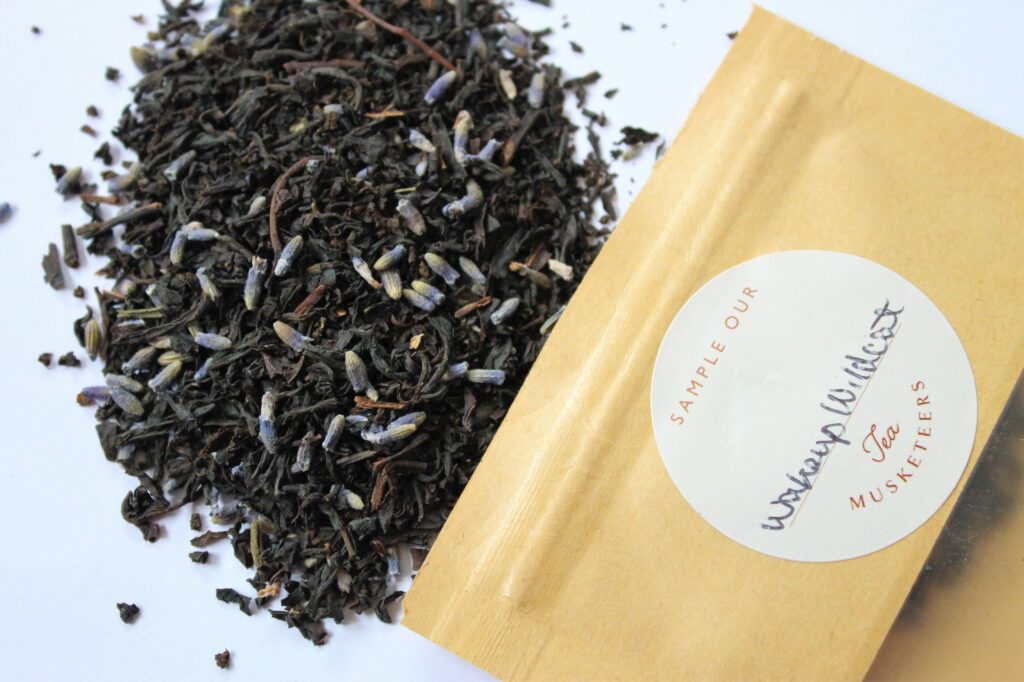
- Plant: Lavandula angustifolia
- Type: flowers and buds
- Flavour: floral, sweet, soapy
- Health: improve sleep quality, calmness
Lavender seems to be quite divisive. I like the floral flavour, but others find it too soapy and unpleasant. Nonetheless, the buds and flowers of the lavender plant make excellent flavourings for sugar, biscuits, and tea. The flavour is very floral with a natural sweetness. The leaves can also be used from the lavender plant, giving a woodier rosemary-esque taste, but you rarely find these in tea blends unless you make your own.
As for potential health benefits, lavender is linked to calmness and reduced anxiety. It is commonly used in aromatherapy and is also a common ingredient in sleep blends.
Yogi’s Honey Lavender blend is one of the most highly rated lavender blends. I also recommend taking a look at BRUU’s Relax blend. You can get 15% off your order by using code IzzyBRUU too. If you want a pure lavender tea, search for culinary lavender instead – you can buy it in bulk for a reasonable price.
10. Turmeric
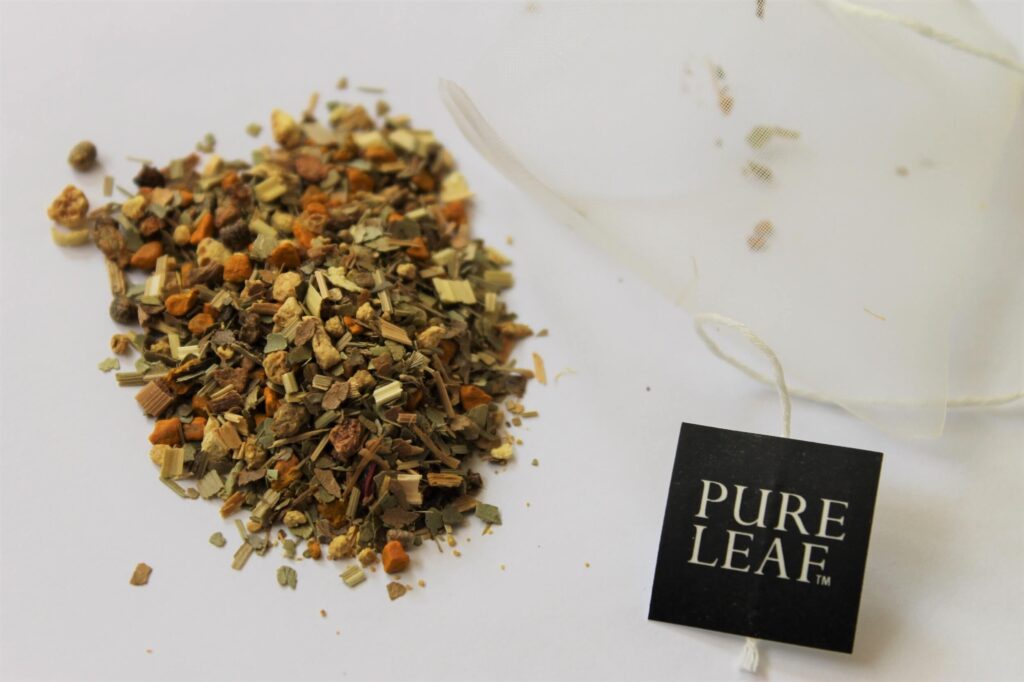
- Plant: Curcuma longa
- Type: root only
- Flavour: earthy, spicy, warm, woody
- Health: reduce inflammation
Turmeric has been kind of a cure-all ingredient in the past few years, despite limited evidence that it’s beneficial for your health besides reducing inflammation somewhat. This is why I recommend turmeric tea for text thumb inflammation… but not for curing any kind of serious ailment!
Turmeric tea is best made with fresh turmeric root. It looks exactly the same as ginger root, but a little thinner and darker on the outside, and can be prepared in the same way. If you don’t have fresh root, use a turmeric tea. Do not use powdered turmeric, as this just makes a mess and leaves you with gritty, textured water. Save the powder for a smoothie or curry instead.
My favourite turmeric tea is Basilur Turmeric, which also contains ginger, orange peel and lemon verbena. Find it on Amazon or read my full review.
Other Herbal Teas to Try
As I already mentioned, there is an endless list of herbal teas to try. I have mentioned my top 10 above, but I also highly recommend checking out these:
- Cinnamon – pop a cinnamon scroll in your ginger tea for extra sweet spice,
- Dandelion – both the root and flowers can be made into tea, and the leaves are edible too,
- Echinacea – a pretty flower that makes a tea to boost your immune system,
- Fennel – use the seeds to make tea for an additional sweet anise note,
- Lemon verbena – visually similar to spearmint, but with a grassy and lemon note,
- Lemongrass – great for a cold and a great grassy zest flavour,
- Liquorice – this root is plenty sweet but can increase blood pressure so be careful,
- Rose – aromatic and floral, which is perfect for a Valentine’s Day tea,
- Sage – savoury and slightly astringent, it adds body to an herbal blend.

FAQs
Each herbal tea has a different health benefit. The best will be a blend of different herbs. Chamomile, mint and ginger are full of antioxidants, so start there.
Yes, but check with your doctor if you take any medication or have any underlying medical conditions. Most herbal teas are a very low concentration once brewed, so will have minimal effects.
Tisane is another word for herbal tea. This is any infusion of plant matter and water that isn’t from the true tea plant, Camellia sinensis.
You can brew any herb in water. Herbs that make particularly nice tea include mint, sage, chamomile, ginger and lavender.
In the world of tea, true tea (e.g., black tea, green tea, white tea, etc.) isn’t considered an herb. An herb is any other plant that can be made into tea – usually decaffeinated, but not always. See yerba mate.
I recommend Pukka or Whittard of Chelsea as the best brand for herbal tea. Most tea brands will have an herbal line, however.
Countless types! There are herbs and plants all over the world that different cultures make into tea by submerging them in water. Herbal teas can be made from the leaves, seeds, flowers and roots of any edible plant.
It comes down to personal taste. Chamomile and mint are two of the most popular types, but I personally prefer the fiery taste of ginger tea.
